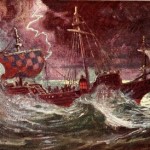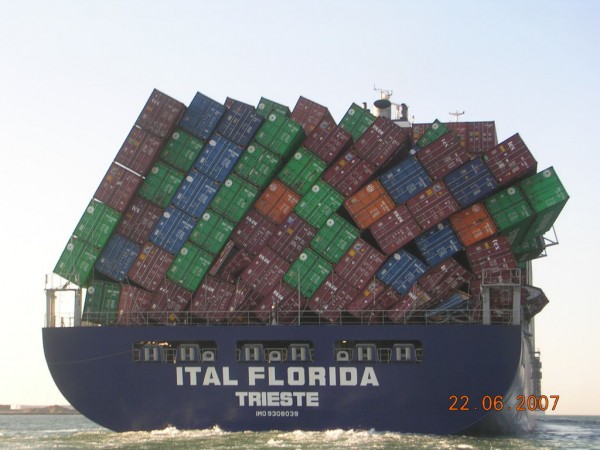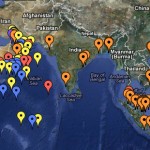![]()
After announcing at work that I was taking a sailing sabbatical, I was asked a bunch of questions. This is the list of the 5 most popular. Leave a comment with your questions. The most popular question was about Pirates. I am not a thrill seeker or one who takes risk lightly, but encountering pirates is less likely than the risks we ignore daily in our land lubber lifestyles.

Baseball Pirate

Somali Pirate
Pirates have grabbed many headlines in the global press for their horrific actions in recent years. I am concerned about some pirates, but not all. The mascot for baseball’s Pittsburgh Pirates does not strike fear in me because the team lacks strong pitching, while the Somali pirate would cause heart palpitations because they can fire some scary heat. Our course is to sail in the Atlantic from BA to NYC where the piracy history is almost non-existent since 1800. There are two sources for historical pirate incidents; ICC tracks commercial vessels and Noonsite tracks pleasure vessels (cruisers). Here is an example of an ICC report from yesterday in Togo: “Eleven robbers in an unlit boat approached an anchored chemical tanker. Two robbers jumped into the water and attempted to board the tanker via the anchor chain but failed and returned to their boat. The robbers aborted the attempted boarding and moved away.”
The ICC data to the left clearly shows that the South American coast was clear of pirates in 2012. I left the US off the map since no pirate attacks were recorded. From the ICC it is clear that the hotspot is a couple of oceans away from our planned course. I zoomed in on the hotspot in the map on the right. The Arabian sea and parts of the Indian Ocean are spots Two Fish will avoid. If I were passing through this region today, I would have my boat shipped to the Mediterranean. NATO forces would agree with this decision but their view might change in the future.
The annual numbers for piracy were at their lowest in 2012. Experts are unclear if this is driven by the larger military presence, more stability in Somalia, better armed ships or fewer cruisers passing through? I will hold off on testing these theories because I do not want to become a data point on the above maps. I told you I am prudent. The noonsite website hosts an entire section on piracy information for cruisers. They suggest using wasp spray as a defense as it fires for 20 feet. I think the attackers’ guns might shoot a bit farther. Noonsite suggests that several boats should travel together as a security measure.
My heart goes out to any fellow mariner that suffers under horrible pirates. For us, I think it is important to frame this risk in terms of probability. In our home town of New York City, we are enjoying a lessening in crime rates: only 400 murders last year. It is a lot more probable that a New Yorker is murdered than is the victim of a pirate attack in a low-risk ocean. Add to the mix car accidents, elevator falls, and bear attacks, and being aboard a boat seems like a safer option. Petty crime is more of a concern for cruisers but I will discuss that in another blog post.
![]()
The second most common question is will you guys get sick of each other? The person asking the question usually has a bit of a grin and then states “I would kill my spouse after 2 weeks. I need my space.”. As I said in the previous post, you never know who is going to kill you. Oddly, neither Gail nor I thought about this issue. It only hit our radar after we had bought the boat, and we were asked by others. This could be a very expensive oversight, or be a sign that we know how to compromise and find a balance. To add to the risk, the boat lifestyle will be a big change. Currently, I travel a decent amount for work so we often are apart for a week at a time. I think we will be just fine if Gail gets her morning coffee and I can watch a movie after a bad day. We have discussed this issue after being asked about it so many times. We have decided we should try to do some things separately such as trips to the grocery store, visiting a fellow cruiser and other space-yielding activities.
![]()

Sea creature at 9,000 feet deep
Do you sail at night or just anchor? Our anchor rode (fancy name for the line attached to the anchor) is 250 feet and needs plenty of slack to hold. The average ocean depth is 14,000 feet so we sail all day and night when on a passage. But this question needs a longer answer because most non-sailors assume we will be sailing most of the time during this sabbatical. Wrong. I would predict that 2/3 of the time we will be at anchor. Swimming, fixing the boat, biking onshore, rocking on the boat as we wait out a weather system, reading fun books and fix it manuals, and other fun and essential stuff. We are not sure how long our passages will be. Some will be as short as 5 hours (Carribean) and the longest will probably be 5 days. On long passages we will try shifts of 4 hours on, then 4 hours off. That means I helm for 4 hours while Gail sleeps and then we switch. The process does not end until we reach the next anchorage. We are trying to make this fun for ourselves and not a passage with Captain Bligh that is all about mileage.
![]()
How will you survive Storms? Antonio from the Tempest was not able to anticipate the storm that forced him ashore in the opening
 scene of Shakespeare’s play. I imagine if he had had our technology then the outcome for the Duke of Milan would have been much different. We have the ability to download long term weather forecasts, hire professional weather routers, use radar to track storm cells, and update weather reports every 4 hours via satellite. With that technology, and an ability to relax and wait for the next weather window we should rarely see wind speeds over 40 knots. I remember one decade-long cruiser explaining that he almost never encoutered those wind speeds because of prudent planning. But what if the big stuff comes? The boat is built to take a ton of punishment and we have storm coping strategies. For example, we can operate everything from the cockpit, making it much safer in high winds. Also, we have a drogue to stablize the boat in high seas. In certain conditions we will “park” the boat in the ocean when it gets ugly via a variety of sailing techniques. Back-winding the jib (trimming it from the wrong side) stablilzes the boat in high wind speeds. Running bare-poled (no sails) and a variety of other storm coping techniques are used by mariners to make a bad situation much less scary.
scene of Shakespeare’s play. I imagine if he had had our technology then the outcome for the Duke of Milan would have been much different. We have the ability to download long term weather forecasts, hire professional weather routers, use radar to track storm cells, and update weather reports every 4 hours via satellite. With that technology, and an ability to relax and wait for the next weather window we should rarely see wind speeds over 40 knots. I remember one decade-long cruiser explaining that he almost never encoutered those wind speeds because of prudent planning. But what if the big stuff comes? The boat is built to take a ton of punishment and we have storm coping strategies. For example, we can operate everything from the cockpit, making it much safer in high winds. Also, we have a drogue to stablize the boat in high seas. In certain conditions we will “park” the boat in the ocean when it gets ugly via a variety of sailing techniques. Back-winding the jib (trimming it from the wrong side) stablilzes the boat in high wind speeds. Running bare-poled (no sails) and a variety of other storm coping techniques are used by mariners to make a bad situation much less scary.


How will you cope with an impact with a foreign object such as a whale or a shipping container? As you can see from the photo, modern shipping has its share of mishaps. Occasionally, a strong storm or a poor securing job allows a truck size container to fall into the ocean. Some continue to float for weeks and are a major hazard to marine traffic. They can not be seen on radar and usually are found when the passing boat hears the crunching sound of impact. Statistically, this risk is somewhere in the region of lightning strikes or lottery wins but we still have a plan. Firstly, our catamaran is pretty hard to sink. Two hulls, many water tight compartments and sacrificial keels are part of our protection plan. At worst, we have a liferaft and a dinghy to move onto if salt water inspires a change of venue.
So what are our greatest fears?
 Gail’s Fears
Gail’s Fears
1) Gail will get sea sick at times, even with modern drugs, ginger candies, voodoo and other preventative measures. It is no fun to be seasick, but even less fun when it seems it will never end. Jason needs to make sure he can handle the boat alone during these times by choosing easy routes and drinking tons of tea, while trying to make Gail laugh.
2) Gail’s second fear is a bit illogical but very common with newbie cruisers. She is worried she will come on deck at night to discover that I have fallen overboard miles ago. This is not going to happen because we have many measures to keep humans on the boat and out of the ocean. These “no swimming at night” measures are: our enclosed cockpit, control lines led to the cockpit, jacklines to keep people tied to the boat, flat decks with high lifelines, and personal AIS beacons. I will be sensitive to her fears and make sure to stay safe as long as she does the same.
Jason’s Fear
 1) My biggest fear is being bored. From Manhattan to a remote Brazilian anchorage, will I adjust to the lack of city stimuli? No take-out food, no long walks exploring, no people-watching and no engaging co-workers. I will both miss and enjoy being taken out of the action.
1) My biggest fear is being bored. From Manhattan to a remote Brazilian anchorage, will I adjust to the lack of city stimuli? No take-out food, no long walks exploring, no people-watching and no engaging co-workers. I will both miss and enjoy being taken out of the action.
2) My second fear is physical discomfort. We are lucky to have a very comfortable boat, but what is it like when you have the flu? Or you are super-hot and have been stung by every insect on the planet? Or want a bit of room to walk about? We will find out how much of an issue this is for me.
Gail’s Final Fear
Gail is hoping that I stay comfortable since I can be a crab when bored or the living quarters do not suit. If I get crabby, Gail may hoist me up the mast.


5 Responses to Pirates, Storms and Sea Serpents: Myth or Threat?